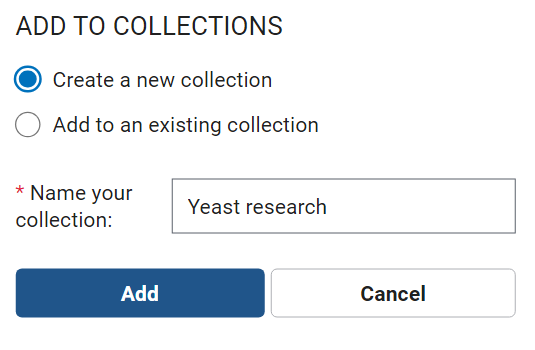Step 1: Learning about the project from a publication
Background
You met with Dr. Smythe and she has asked you to read a publication and be prepared to discuss it at your next meeting:
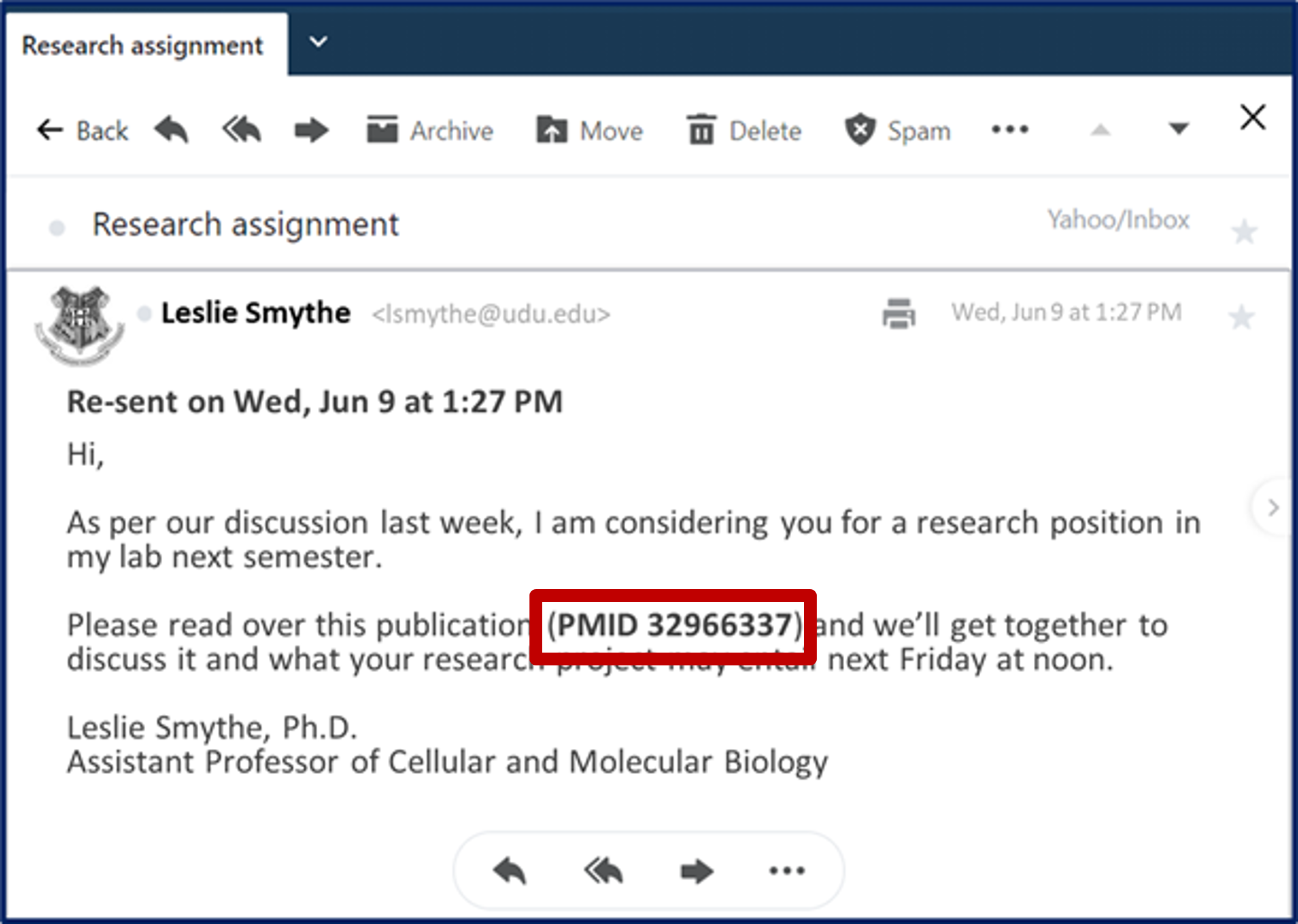
There are a few implicit challenges here:
-
- Can you find the publication and access the full-text?
- Can you read the manuscript sufficiently to participate in a discussion about the paper?
- Do you go beyond the words on the page, including performing additional research as needed, to be able to fully interpret and be able to apply paper's information to a research project?
Most research projects start with a literature search or on information found in a particular scientific publication. The first thing any research student needs to know is where to find those publications. Understanding, interpreting and applying information described in a research publication is a skill that even seasoned scientists continue to work on.
So for the first step of your research, we'll show you where to find the publication and even how you can access the full-text of the publication online. (This is not true for all publications, but there is a growing resource that aims to help out with this!)
Then, we'll do a quick scan to understand the main topics in this publication and figure out what should be done to research additional helpful information for understanding the assigned reading and adding to your knowledge to help in your discussions with Dr. Smythe. We'll also give you some hints on where to find additional cool data that might be of use later, after you have been accepted into the lab and have begun your research project.
So for the first step of your research, we'll show you where to find the publication and even how you can access the full-text of the publication online. (This is not true for all publications, but there is a growing resource that aims to help out with this!)
Then, we'll do a quick scan to understand the main topics in this publication and figure out what should be done to research additional helpful information for understanding the assigned reading and adding to your knowledge to help in your discussions with Dr. Smythe. We'll also give you some hints on where to find additional cool data that might be of use later, after you have been accepted into the lab and have begun your research project.
Where can you find scientific publication information?
NCBI's PubMed® database is a great single source for citations (titles, abstracts and sometimes links to the full-text) for almost 36 million publications from ,more than 40,000 life and health science journals, as well as thousands of scientific or biomedical reports and online books.
In short, if you are looking for a peer-reviewed scientific article - you should look for it first in PubMed®.
Once you've found a publication in PubMed®, there may be links to the full-text at the Publisher's site or in another NCBI database called PubMed Central® or PMC. This is a free full-text archive of biomedical and life sciences journal literature that was created to support the NIH Open Access Policy to make available full-text produced from federally-funded research.
 Search PubMed with the PubMed Identifier (PMID)
Search PubMed with the PubMed Identifier (PMID)
- Go to the PubMed homepage: https://www.ncbi.nlm.nih.gov/pubmed
- Search with 32966337.
- Access the full-text article in PubMed Central by clicking

Save the article to a Yeast research folder! |
Sometimes you can get access to data described in the paper!
(if it was submitted to NCBI)
| For future work, you can add the paper's related data to your Yeast research collection or download them to a folder on your computer! 1. In PubMed Central, expand the "Links to NCBI Databases" section on the right. Many publications have a link to a BioProject record with a summary of the data submitted to NCBI that was mentioned in the article.
2. On the Bioproject record page, you can save it to a collection so you can access it later. Click "Send to" to add it to a collection and then either create a new or add it to an existing collection such as your Yeast research one. 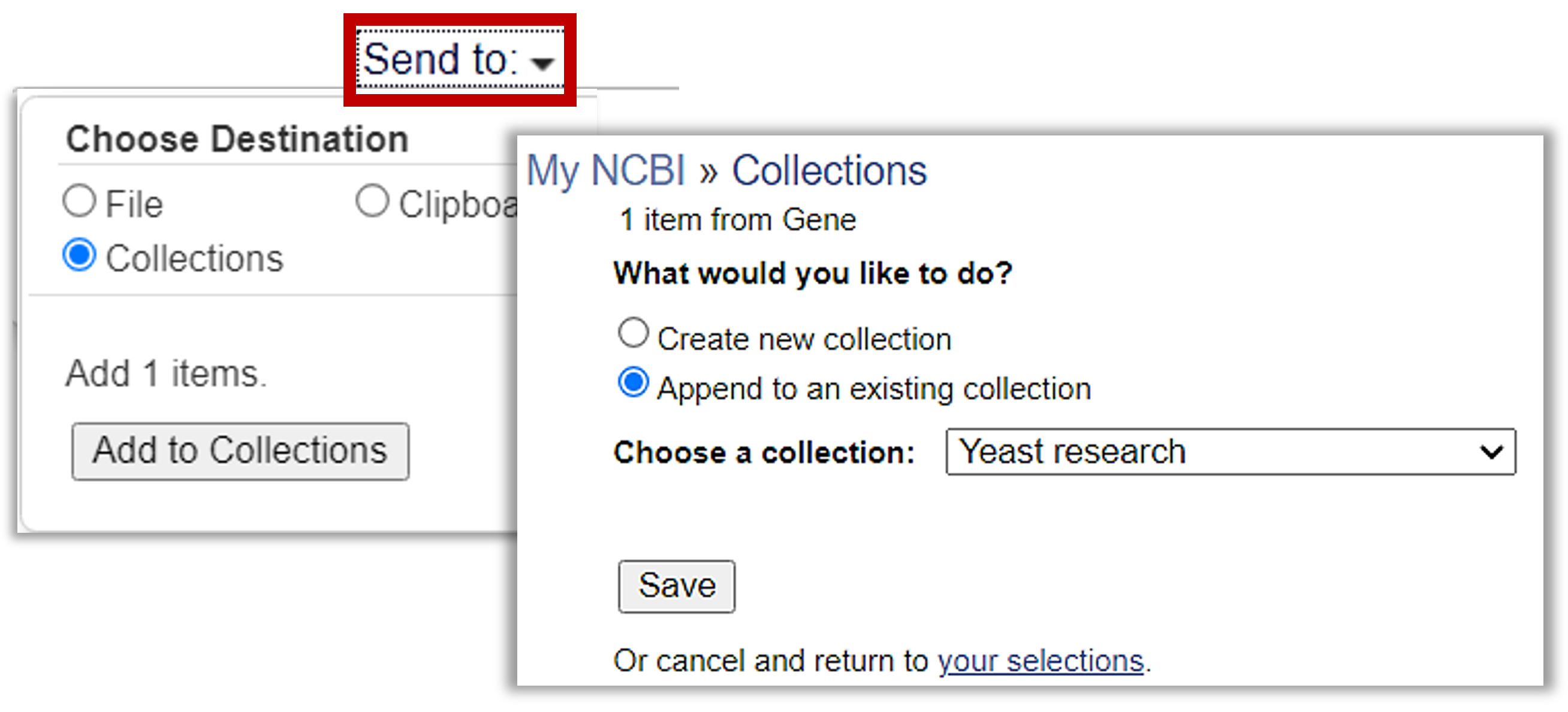  If you are interested in the actual data referenced in the publication, you can click on the particular "Project data" link for the type of data you are interested in (such as BioSamples or SRA Experiments) and either:
- add those to a collection (the same way you did above)
- or you can download the actual data from those resources to a file on your own computer! |
What should we do next to prepare for our research discussion with Dr. Smythe?
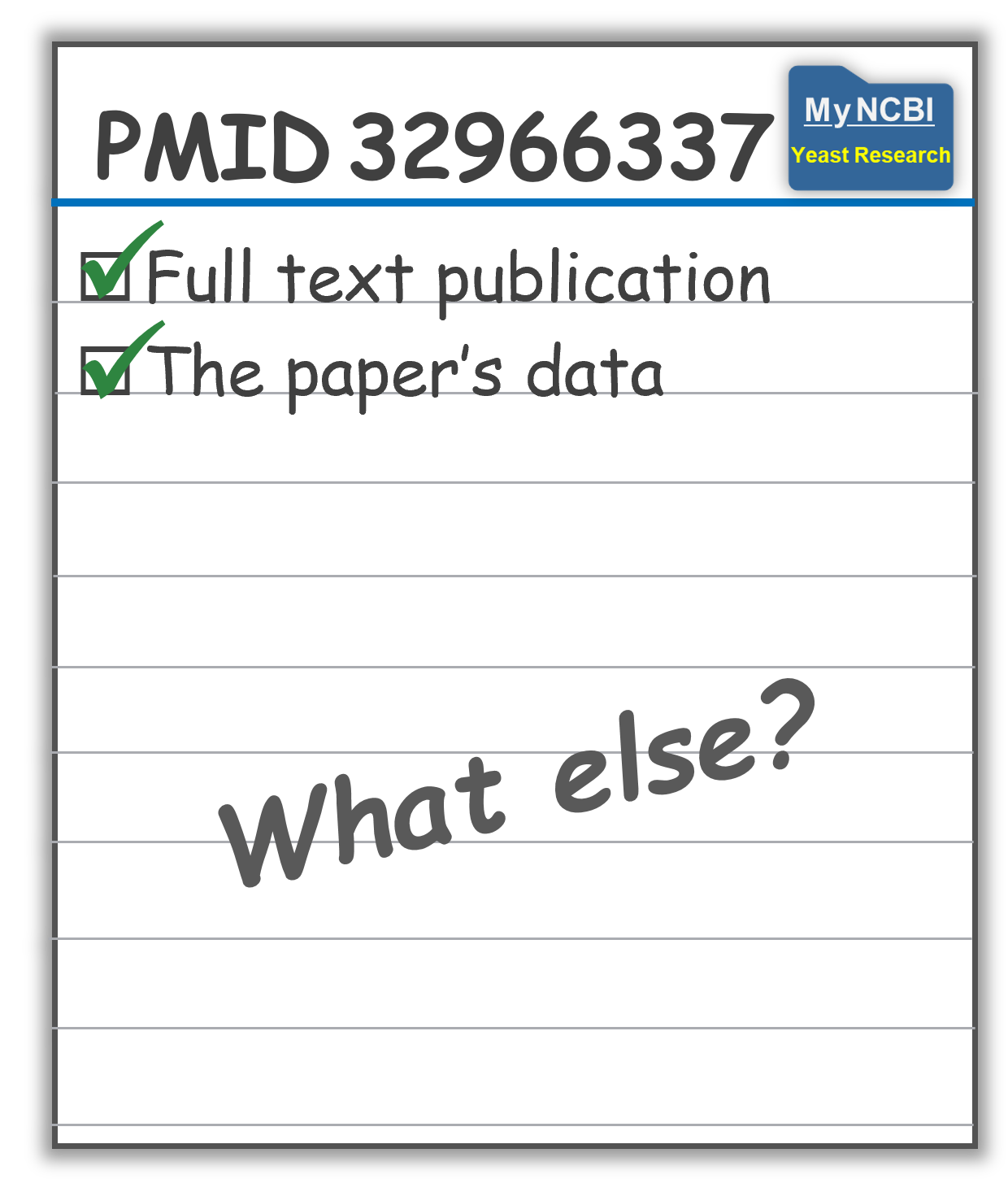
 Take a look at the abstract, what is the main point of the paper?
Take a look at the abstract, what is the main point of the paper?
 For a hint, click here.
For a hint, click here.
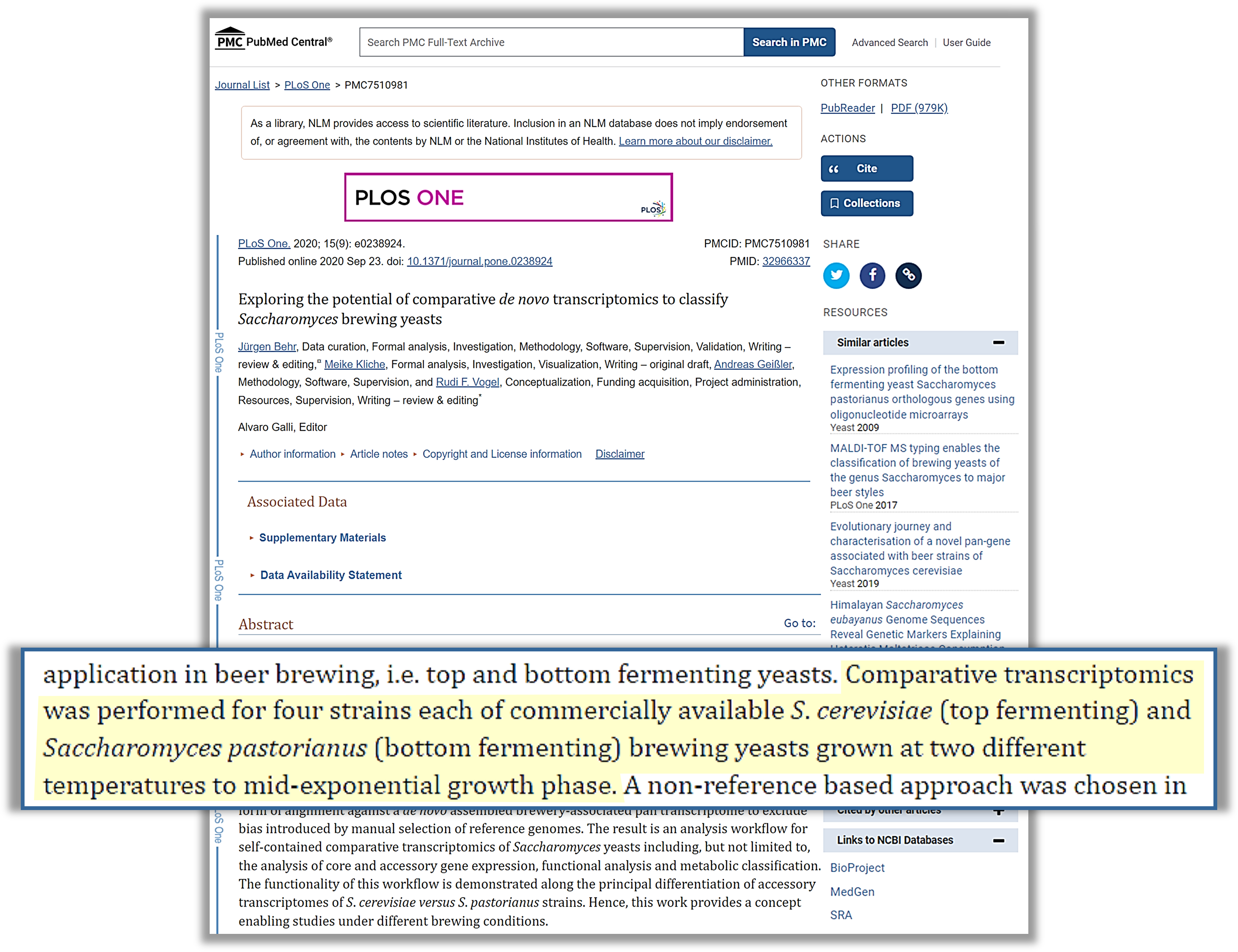
Quick Notes
1. There are 2 different yeast species with different phenotypes.
2. This paper is looking at differences in gene expression (transcriptomics) - which is pretty advanced....and we can get into that after our beginning searches.
We'll focus on the fact that these are different organisms!
| Phenotype | Saccharomyces cerevisiae |
Saccharomyces pastorianus |
| Fermentation mode | Top fermenter (produces ales) |
Bottom fermenter (produces lagers) |
| Optimal fermentation temperature (range-ish) | warm (60-72°F) |
cool (40-55°F) |
| Import mechanism for maltose-related sugars | facilitated active transport | proton symport |
| Metabolism of maltose-related carbohydrates | Does some fine, cannot metabolise melibiose |
Metabolises all maltose-related carbohydrates well. |
What kind of additional information might be helpful in discussing these yeast species?
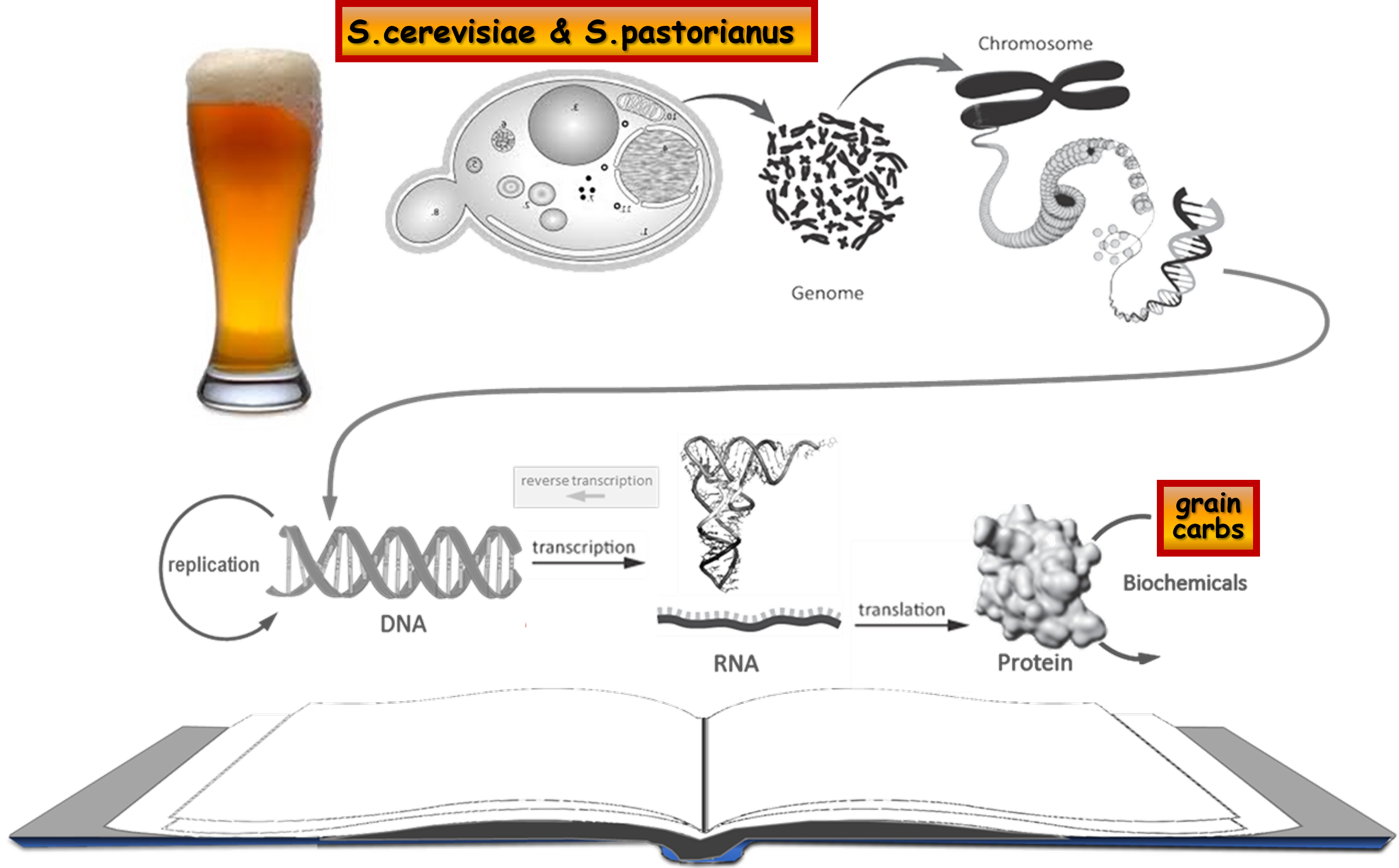
 Write down a list to track information to find!
Write down a list to track information to find!
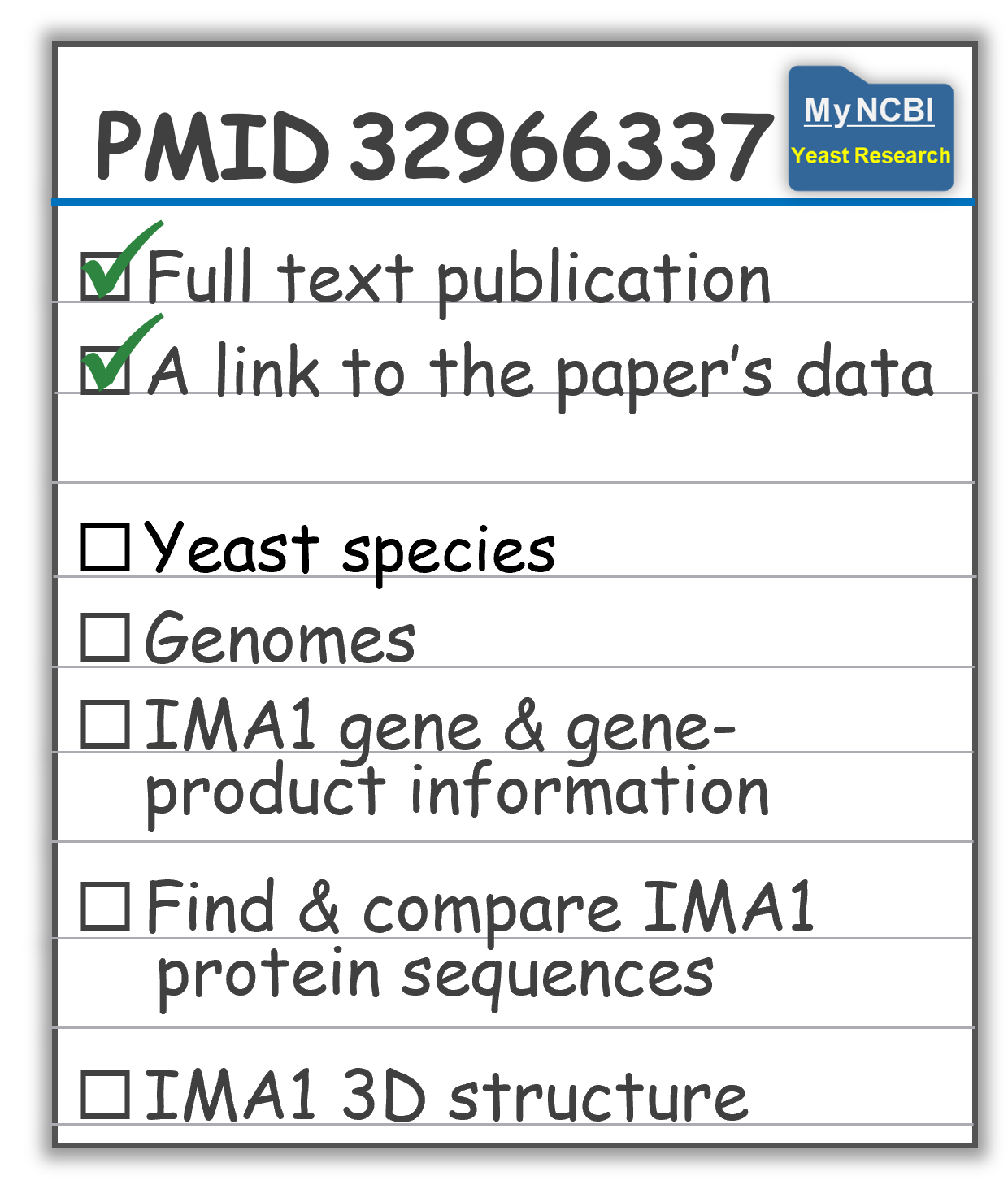
And just a reminder....
Last Reviewed: June 28, 2023



